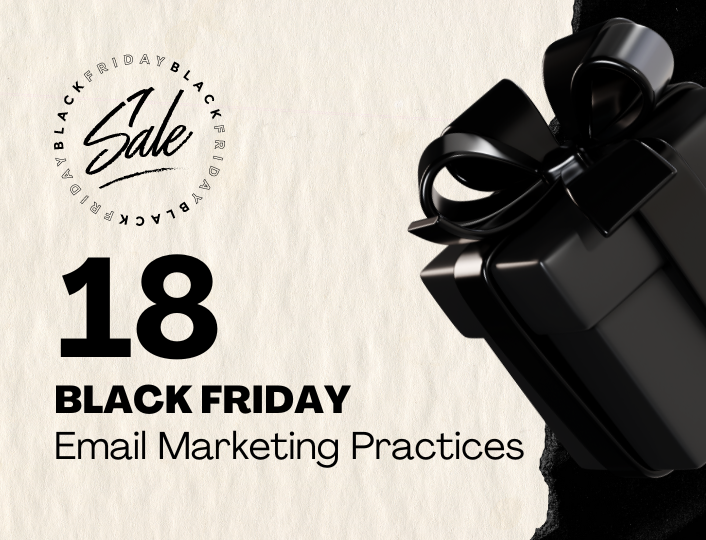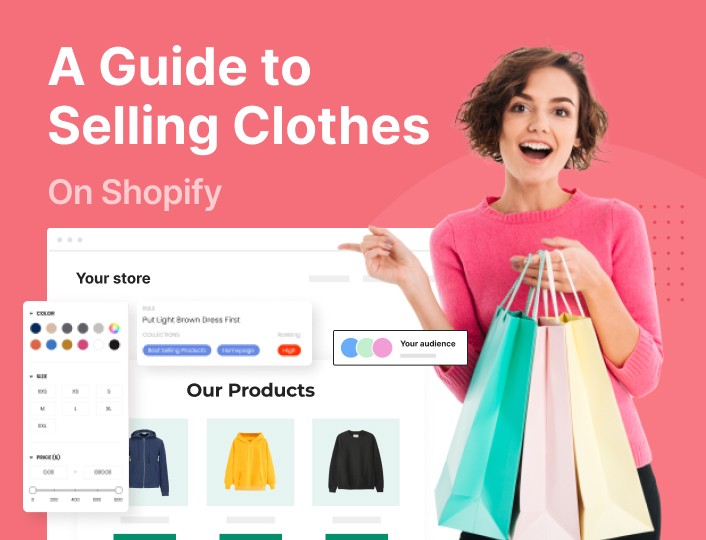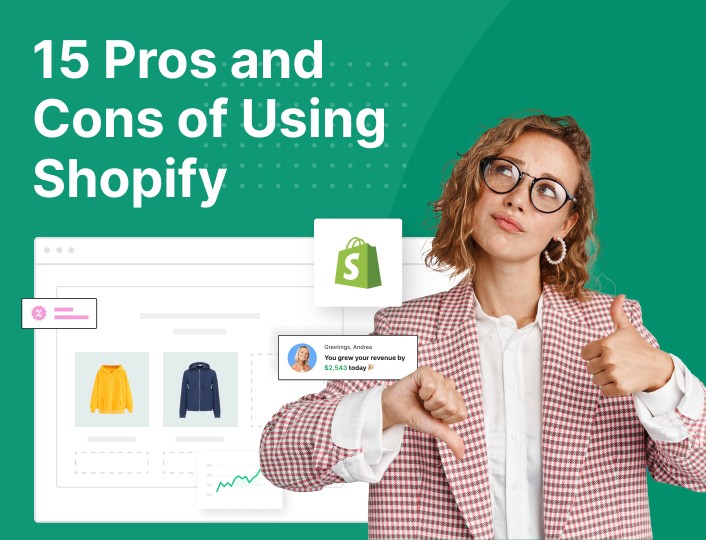Black Friday has evolved into one of the most anticipated and competitive shopping events of the year. Mastering the art of Black Friday email marketing is essential if you are looking to stand out from the crowd.
Crafting compelling, targeted, and strategic email campaigns can make all the difference in attracting, engaging, and converting leads into customers.
In this guide, we’ll delve into the best Black Friday email marketing practices that can help you take advantage of this high-stakes shopping season. So stick around as we explore these strategies.
Strategies for Building Your Black Friday Email List
Building your email list in preparation for Black Friday enables you maximize sales when the season finally comes around. Here are some Black Friday email marketing practices to test and adopt:
1. Create an Irresistible Offer
Entice people to subscribe to your Black Friday email list with something valuable. This could be an exclusive Black Friday discount, early access to deals, a free e-book or downloadable resource, or a chance to win a prize.


Make sure your offer is compelling enough to motivate visitors to share their email addresses with you. For instance, you can offer a 20% discount on your products exclusively for your email subscribers.
2. Optimize Your Website for Sign-Ups
Your website design or outlook can make or mar your entire Black Friday email marketing strategy. For premium results, make it easy for visitors to join your email list by strategically placing email sign-up forms throughout your website. Adoric offers high-converting signup forms for you.
Add them to high-traffic areas on your Shopify website such as the homepage, product pages, and checkout process. Using pop-up or slide-in forms can help you capture visitors’ attention without being overly intrusive.
Design dedicated landing pages on your Shopify website for Black Friday sign-ups. On these pages, highlight the benefits of subscribing to receive emails, such as early notifications of exclusive deals and offers.
3. Leverage Social Media
Tap into the power of social media to grow your Black Friday email list. Promote your email sign-up across all your social media platforms. Create posts and stories to inform your followers about the exclusive benefits of subscribing.
Add a link in your bio that leads to the sign-up forms. Post engaging content that gives customers a glimpse of what they stand to get.
Run targeted paid advertising campaigns on social media to reach a wider audience interested in Black Friday deals, etc.
4. Host Contests and Giveaways
People hardly turn away from a giveaway program. Giveaways work both for building email lists and generating website traffic.


Organize Black Friday-themed contests or giveaways with entry requirements that include subscribing to your email list. Ensure that the prizes are enticing and relevant to your target audience.
Create a buzz about the contest on your social media and website before D-day to gain more attention, driving traffic to your sign-up forms.
5. Content Marketing
Content is crucial when it comes to building an email list. The quality of your content will determine to a large extent the performance of your campaign. Create valuable and relevant content leading up to Black Friday, such as blog posts, videos, or gift guides.
Ensure that the content can appeal to the emotions of your target audience. Also, don’t forget to include email sign-up call-to-actions (CTAs) within this content to capture visitors interested in your Black Friday deals.
6. Segmented Sign-Up Forms
Segmenting your sign-up forms from the jump is a great way to boost efficiency. Customize your sign-up forms or landing pages for different customer segments. Doing this will help you craft personalized messages each group can relate to.
For instance, have separate forms for new customers and existing subscribers. Then tailor your messaging to address the specific interests and needs of each segment, increasing the odds of adding new subscribers.
Creating Compelling Emails
Here are some of the best email marketing practices to help you craft emails that capture your subscribers’ attention and compel them to take action:
7. Understand Your Audience
Have a deep understanding of your target audience. Know their preferences, pain points, interests, behaviors, economic class, age range, gender, etc.
The best approach to do this is to create buyer personas to represent different segments of your audience. A buyer persona is a fictional character that possesses specific qualities and personalities like the ones listed above.
Go ahead and craft your email content to resonate with each specific persona while addressing their needs, desires, and challenges.
8. Personalization
Personalization goes beyond just using the recipient’s first name. Utilize data such as purchase history, browsing behavior, and location to create highly personalized emails.
However, that doesn’t mean you should neglect the relevance of first names – at least 8 in 10 customers are more likely to patronize businesses that offer personalized experiences.
Recommend products or content based on the recipient’s previous interactions with your brand. Use dynamic content blocks to customize different sections of the email based on the recipient’s profile.
9. Compelling Subject Lines
Your subject line is the first thing recipients see, so it needs to be attention-grabbing and relevant. In fact, this is one of the best email marketing practices you cannot afford to overlook.
When crafting your subject line incorporate elements of curiosity, urgency, and benefit in your subject lines. These factors play a vital role in determining your email open rate.
Example: “Hey Jane, I have a gift for you”


Avoid using all caps, excessive punctuation, or misleading subject lines. A/B test your options to determine which subject lines perform best.
10. Engaging Content
The next thing that requires attention is the content of the email. A compelling subject line doesn’t automatically lead to an attention-retaining email body.
Ensure you start the content with something related to the subject. Keep it engaging, and offer valuable content that speaks directly to your audience’s needs. Tell a story or provide a solution to a problem.
Use persuasive language to create a sense of excitement or desire. Keep paragraphs short, use bullet points, and include white space for readability.
Also, add visuals where and when necessary. High-quality images, videos, and graphics can significantly enhance your email’s appeal.
11. Clear Call-to-Action (CTA)
As simple as it may seem, adding a call-to-action to your Black Friday email campaign can make a great deal of difference. The placement, color, font size, and choice of words are key factors. According to CLX, the red CTA button outperforms the green one.


Your CTA is the action you want recipients to take. Make it clear, concise, and action-driven. Use compelling action verbs, such as “Shop Now,” “Get Started,” or “Learn More.”
Place the CTA button in a visible position, and use bold contrasting colors and appropriate sizing that make it stand out from the rest of the content.
12. Mobile Optimization
Mobile optimization drives email marketing. A significant portion of email opens occurs on mobile devices, so it’s important to ensure your emails are mobile-responsive.
Use a responsive email template that adapts to various screen sizes. Test your emails on different devices and email clients to ensure they display correctly before pushing them out.
Analyzing Your Email Campaign Performance
Performance analysis enables you to identify gaps and areas of improvement. Consider the following steps:
13. Define your Objectives
Before you begin analyzing your email campaign, highlight your clear objectives. Ask yourself what you want to achieve with this campaign. Common objectives include increasing sales, driving website traffic, boosting engagement, or growing your Black Friday email list.
14. Collect Data
Collect all relevant data related to your email campaign. This data may include email delivery rates, open rates, click-through rates (CTR), and conversion rates. You want to consider all key metrics that affect e-commerce growth.
Ensure you have data from both the email service provider (ESP) and your website analytics platform. With that, you can then go ahead and calculate your email metrics.
15. Calculate Key Metrics
One of the ways of determining the performance of your marketing strategy is to calculate the following key email marketing metrics:
- Open Rate: The percentage of recipients who opened your email.
- Click-Through Rate (CTR): The percentage of recipients who clicked on links within the email.
- Conversion Rate: The percentage of recipients who completed a desired action, such as making a purchase.
- Bounce Rate: The percentage of emails that were not delivered due to various reasons, including invalid addresses or technical issues.
- Unsubscribe Rate: The percentage of recipients who opted out of your email list.
- List Growth Rate: The rate at which your email list is expanding.
- Revenue Generated: The total revenue directly attributed to the email campaign.
16. Segmentation Analysis
If you segmented your email list for the campaign, analyze the performance of each segment to identify what works better. Compare engagement, conversion rates, and revenue generated across each segment.
Identifying which segments performed best is a great way to understand your audience so you can implement what you have learned in your next email campaign.
17. Device, Email Client, and Conversion Path Analysis
Determine which email clients and devices your recipients are using to open your emails. Check if your emails are responsive and display correctly on both desktop and mobile devices.
With this, you know if your emails are optimized for various platforms. And if not, you can make the necessary adjustments. You also gain better insights into your customers, especially when creating a buyer persona.
Also, analyze the user’s journey after clicking on your email. Did recipients take the desired actions on your website or landing pages?
Identify any drop-offs or bottlenecks in the conversion path. Use tools like Google Analytics to track conversion funnels and user behavior.
18. A/B Testing Results
If you conducted A/B tests within your email campaign, analyze the results of each variation.
Ensure that your results are statistically significant. In most cases, you should aim for a confidence level of at least 95% to conclude that one variant outperforms another.
In addition, look for positive changes in the metric you were testing. For example, if you were testing subject lines, the variant with a higher open rate indicates a successful test. Apply the insight you got from the test to further campaigns.
Final words
Remember, the key to effective Black Friday email marketing is to continually learn, adapt, and refine your approach based on data and customer insights. With the best practices in this guide, you’re well-equipped to make your Black Friday campaigns stand out and achieve remarkable results.
Don’t forget to use Adoric for all your email marketing needs such as creating signup forms, A/B testing, personalization, and more.
Get started with us today!




